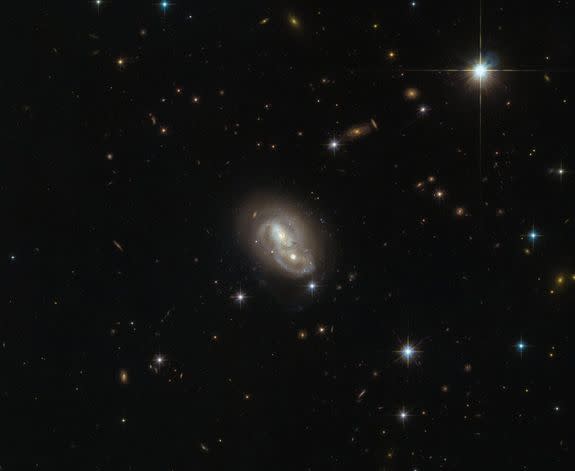Gorgeous new Hubble photo shows two galaxies dancing through space

A powerful space telescope orbiting Earth has spied on two galaxies in the midst of a cosmic close call 500 million light-years away.
The Hubble Space Telescope spotted two galaxies — collectively called IRAS 06076-2139 — speeding past one another at about 1.2 million miles per hour, according to NASA.
SEE ALSO: Countless galaxies billions of light-years away shine in new Hubble photo
The two galaxies are moving so fast that they likely won't merge, but the two objects are so huge that they will distort each other as they pass about 20,000 light-years from one another.
The immense gravity of the two objects will be able to influence the structure of the galaxies as they pass, changing the positions of stars and gas within them.

Image: ESA/Hubble & NASA
"Such galactic interactions are a common sight for Hubble, and have long been a field of study for astronomers," NASA said in a statement.
The Milky Way is actually on its way to a galactic collision itself with the Andromeda Galaxy.
At some point in about 4.5 billion years the two galaxies will merge into one. That may sound slightly (or more-than-slightly) terrifying, but in reality, it shouldn't be too much cause for personal concern.
"While galaxies are populated by billions of stars, the distances between individual stars are so large that hardly any stellar collisions will occur," NASA said of the Andromeda/Milky Way merger.
Scientists working with the Hubble just celebrated the space telescope's 27th year in space, and the intrepid eye on the sky is still going strong.
NASA has previously said that the telescope should be able to continue working in orbit through at least 2020, two years after the James Webb Space Telescope — Hubble's successor — is expected to get to space.

